How does the selector fiber network work?
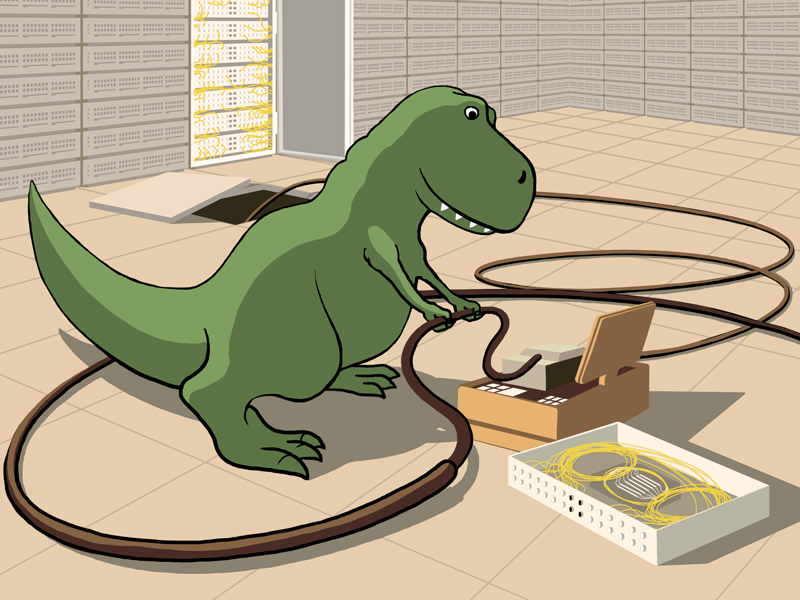
The level and quality of services of any data center largely depend on the quality of the communication channels used. We have always paid great attention to communication issues: almost immediately after the opening of the first data center in 2008, we began building our own fiber-optic communication lines. Today, the total length of all our communication lines is more than 250 kilometers. In many ways, thanks to these networks, we can ensure the smooth operation of Internet channels. In this article we would like to tell you more about our optics.
5 of our data centers are located in St. Petersburg and in the Leningrad region (the data centers Tsvetochnaya and Technodom are located within the city limits of St. Petersburg, and the data centers Dubrovka-1, Dubrovka-2, and Dubrovka-3 "- in the village" Nevskaya Dubrovka "of the Leningrad Region). All data centers are integrated into a single data network:

')
When designing networks, various factors were taken into account: the location of data centers, the possibility of backing up and restoring communication channels in case of damage.
Data Center "Flower"
The central communication hub is the “Flower” data center. There are three cable entries in the data center building: two from cable sewage and another one through the roof.
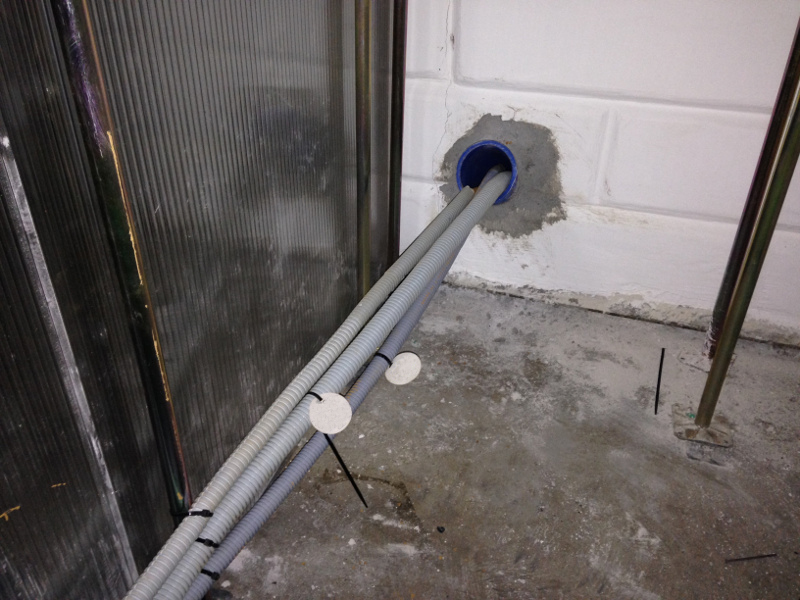
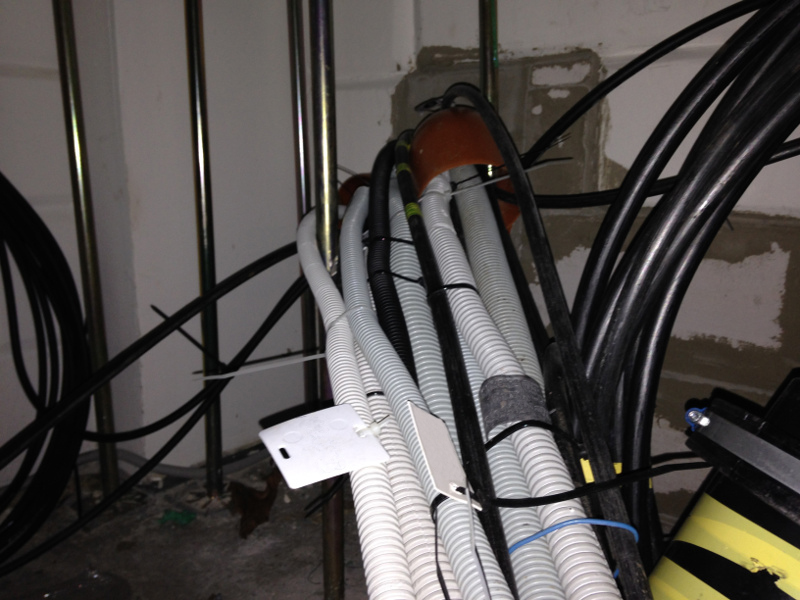
All communication cables are laid under the raised floor and placed in the switching racks, which contain optical crosses. Optical cross is a device designed to embed an optical cable and connect equipment to it.
Cross is a metal box that is installed in a rack. The cable to be terminated is inserted through the back or side wall of the box; on the front wall are strips with optical connectors. We use FC optical connectors that provide the most reliable connection.
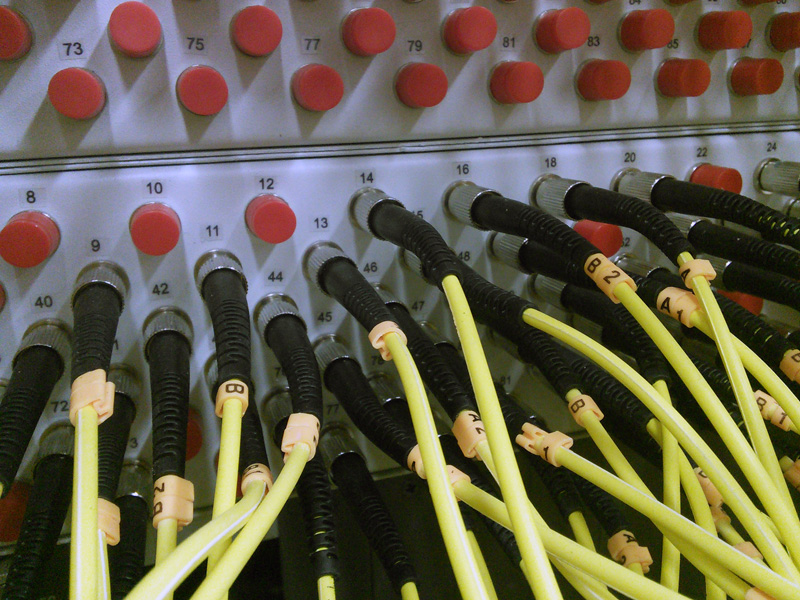
The photo shows one of the seven optical crosses placed in the rack. These are the main crosses of our network. It is on them that the connection between all data centers rests.
On the Flower there are two racks with optical crosses for further switching with client equipment. Our customers include almost all telecom operators in St. Petersburg: RunNet, Retn.Net, OBIT, Raskom, Eurotel, Comstar-UTS, Severen Telecom, Sovintel, GlobalNet, Eltel, Filanko, Prometheus, TeliaSonera, Rostelecom, etc.
All connections in the “Flower” data center are made with optical patchcords over cable trays. We use mostly single-mode connections, which guarantees the stable operation of the equipment regardless of the distance between the racks.
The complex of data centers in Dubrovka
Three of our data centers (Dubrovka-1, Dubrovka-2, Dubrovka-3), networked, are located in the urban-type settlement of Nevskaya Dubrovka, Vsevolozhsk District, Leningrad Region. Communication cables between data centers are laid along power transmission towers and in cable ducts.
With two fiber-optic communication lines, the complex of data centers in Dubrovka is connected to the Tsvetochnaya data center, the city-wide communications center at Borovaya, 57, and the traffic exchange point at Bolshaya Morskaya, 18.
These lines are laid on the supports of the contact network of the railway in the territory of the Vsevolozhsk district. At railway stations, optical couplings are mounted to connect our customers.
A cable of type DFT (it is designed for suspension on supports) is used for laying over power transmission line supports and a contact network, and a DPO or DPS type (intended for laying in sewage systems and pipes) is used for laying in sewers.

Laying the cable on the supports of the contact network of the railway.
The optical length of the communication lines in the section “Flower” - “Dubrovka” is 57 km on the main line and 78 km on the backup line, the total losses are 10.5 dB and 15.5 dB, respectively.
Monitoring and ensuring fault tolerance
From time to time we have to deal with breaks and damage to optical fiber. The reason for the gap often become negligence during the repair and construction works, when the bulldozer or excavator accidentally touches the cable.
There have been cases (including during the largest accident in the entire history of Selektel ) when unknown attackers fired at our cables with air rifles.

Shot cable
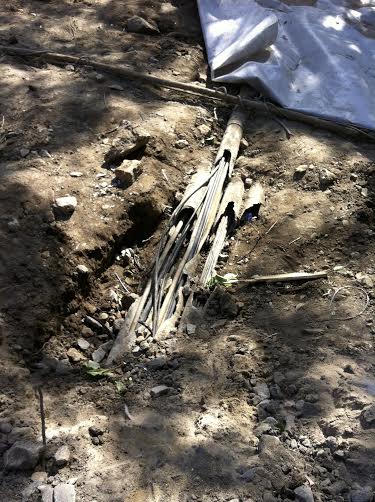
Excavator Damaged Cable
At the same time, even with the most complex damages, we always observed the recovery times specified in the SLA agreements - 8-10 hours after the accident was reported - and this taking into account the fact that the density of our communication cables is from 96 to 144 optical fibers . How do we do it?
Damage tracking procedure is carried out in fully automatic mode.
We monitor the state of communication lines using the EXFO optical monitoring system NQMSfiber. With it, you can monitor the status of the fiber in 24/7/365 mode. Remote testing units (RTUs) are installed at key points in the network, with the help of which continuous (once every 15 seconds) checks of the integrity and degradation of optical fibers are carried out.
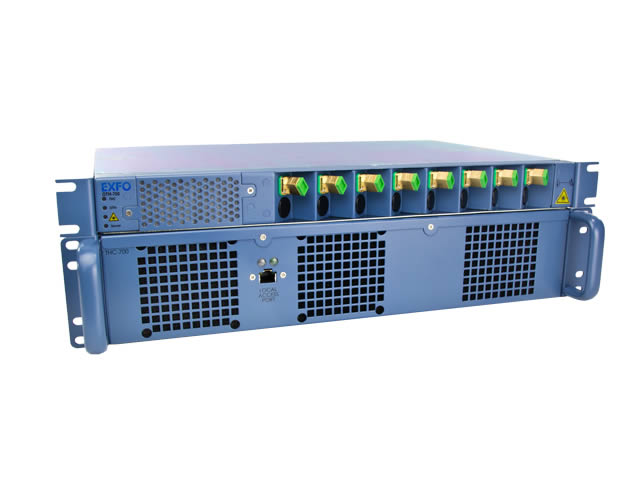
The system is managed through a web interface, quite simple and convenient. In the event of defects, the system instantly sends messages by e-mail and / or via SMS.
Having received the message, we log in and view the following information: event type (fiber breakage or degradation), date and time of the event, distance to the event location. Through the web interface, we can also view the reflectograms, which can be used to determine the distance, as well as direct and reverse losses before and after the event.

All this helps to remotely (i.e., just being at the computer and not going anywhere) to determine the location of the damage with an accuracy of several meters. The emergency team goes to the scene of the accident and promptly restores the connection between the data centers.
In St. Petersburg and the Leningrad Region, we have several component warehouses, which allows us to eliminate accidents and damage more quickly.
We always have everything necessary for servicing communication lines: monitoring equipment, materials for cleaning optical connectors, etc.
For those who can not comment on posts on Habré, we invite to our blog .
Source: https://habr.com/ru/post/206638/
All Articles